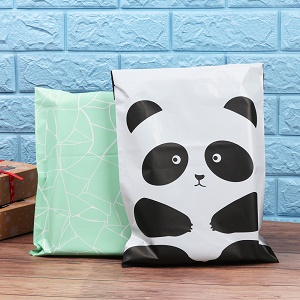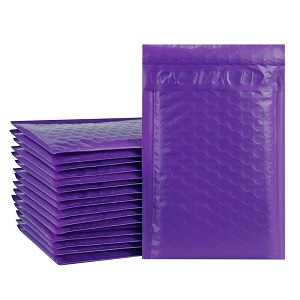When it comes to shipping and packaging, choosing the right type of mailer is crucial for ensuring that your products arrive safely and in good condition. Two popular options are poly mailers and bubble mailers. While both serve the purpose of protecting items during transit, they have distinct characteristics that make them suitable for different types of shipments. In this article, we will explore the differences between poly mailers and bubble mailers, helping you make an informed decision for your shipping needs.
#### Material Composition
The primary difference between poly mailers and bubble mailers lies in their material composition. Poly mailers are made from a durable, lightweight plastic material, typically polyethylene. This makes them water-resistant and tear-resistant, providing a reliable barrier against the elements. On the other hand, bubble mailers consist of a layer of bubble wrap sandwiched between two layers of paper or plastic. The bubble wrap provides cushioning, making bubble mailers ideal for fragile items that require extra protection during shipping.
#### Protection Level
When it comes to protection, bubble mailers have the upper hand. The air-filled bubbles inside bubble mailers act as a shock absorber, safeguarding delicate items such as electronics, glassware, or jewelry from impact during transit. In contrast, poly mailers offer a more basic level of protection. While they are excellent for lightweight and non-fragile items like clothing, books, or promotional materials, they do not provide the same level of cushioning as bubble mailers.
#### Weight and Cost
Another significant difference between poly mailers and bubble mailers is their weight and cost. Poly mailers are generally lighter than bubble mailers, which can lead to lower shipping costs, especially for bulk shipments. Their lightweight nature makes them a popular choice for e-commerce businesses looking to minimize shipping expenses. Bubble mailers, while providing superior protection, tend to be heavier and may incur higher shipping fees. Therefore, if you are shipping items that do not require extensive cushioning, poly mailers may be the more cost-effective option.
#### Size and Versatility
Both poly mailers and bubble mailers come in various sizes, but poly mailers tend to be more versatile in terms of shape and design. They can be easily customized with branding, logos, and colors, making them an excellent choice for businesses looking to enhance their packaging aesthetics. Bubble mailers, while available in different sizes, are typically more standardized in shape due to the need for the bubble wrap interior. This can limit customization options for businesses that want to create a unique unboxing experience for their customers.
#### Environmental Considerations
In recent years, environmental concerns have become increasingly important in packaging choices. Poly mailers are often made from recyclable materials, but their plastic composition raises questions about sustainability. Bubble mailers, especially those made from biodegradable materials, can offer a more eco-friendly alternative. However, it is essential to check the specific product details, as not all bubble mailers are created equal in terms of environmental impact.
#### Conclusion
In summary, the choice between poly mailers and bubble mailers ultimately depends on the nature of the items you are shipping and your specific needs. If you are shipping lightweight, non-fragile items and are looking for a cost-effective solution, poly mailers are an excellent choice. Conversely, if you need to ship fragile items that require extra cushioning, bubble mailers are the way to go. By understanding the differences between these two types of mailers, you can make an informed decision that ensures your products arrive safely and securely at their destination.
Post time: Dec-05-2024












